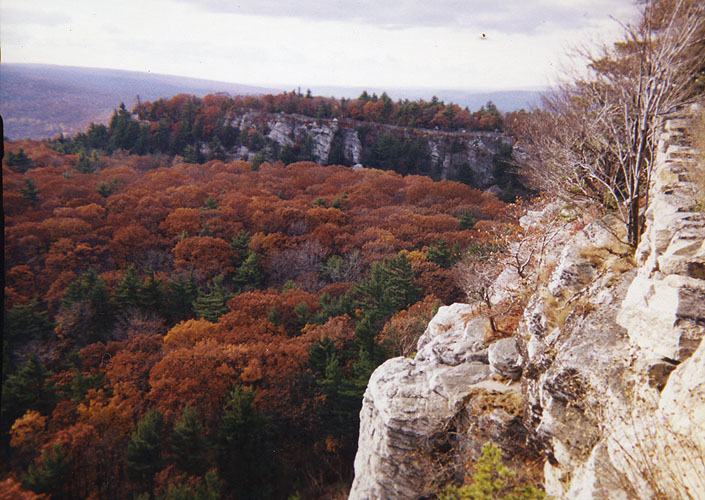

Professor Julia 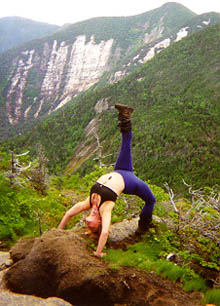 Evergreen Keefer
Evergreen Keefer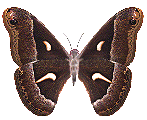 Major Twentieth and Twenty-First Century Writers
Major Twentieth and Twenty-First Century Writers
New York University
Summer 2008
How do humans write about their environment?
How does geography mold politics, war, racism, and cultural evolution?
How does personification of rocks, trees, seas, and streams affect rhetorical devices and reader-response criticism?
How can a desert, river or a mountain change a story?
How do human versus natural disasters impact the dramatic structure and narrative sequencing? 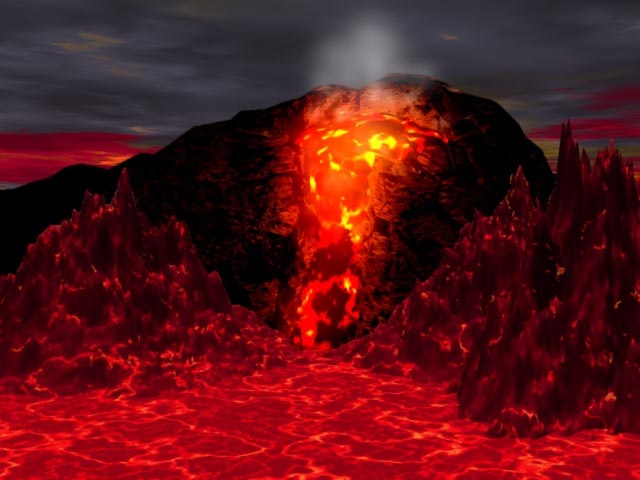
Reading List:
Forest, Farms, and Rivers
The Heart of Darkness and Nostromo by Joseph Conrad
How to Survive as an Adjunct Professor by Wrestling by Julia Keefer
The Conservationist by Nadine Gordimer
Things Fall Apart by Chinua Achebe
Snow, 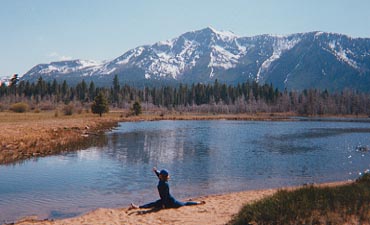 Rocks and Mountains
Rocks and Mountains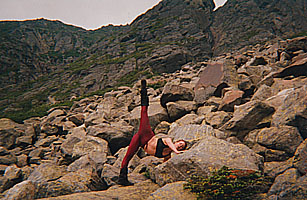
The Snows
of Kilimanjaro by Ernest Hemingway
Snow and Istanbul by Orhan Pamuk
Gardens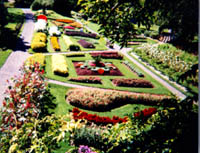
Garden in the Dunes and (Yellow Woman and a Beauty of the Spirit) by Leslie Marmon Silko
Swann's Way by Marcel Proust
Seas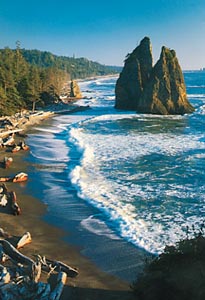
The Waves by Virginia Woolf
Black Water by Joyce Carol Oates
The Alexandrian Quartet by Laurence Durrell (You can just read one unless this is your project)
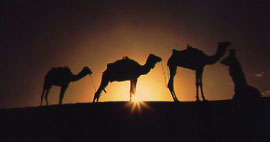 Deserts
Deserts
The Alchemist by Paolo Coelho
God Dies by the Nile by Nawal el Saadawi
Voices from the Other World (required) and Three Novels of Ancient Egypt (optional) by Naguib Mahfouz
Optional reference books: The Spell of the Sensuous by David Abram and Norton's Anthology of Nature Writing
Note that the purpose of the course is to introduce you to a vast buffet of global literature, provoke interesting debate and discussion, sharpen your tools of close reading and critical analysis, and then let you focus on only 3-4 works of your choice for your special project.
May 12: Introduction to course, reading list, theme, criticism, and elements of close textual analysis.
May 19: Rivers, Trees, and Jungles. Discuss the Heart of Darkness. Read Gordimer and Keefer.
September 24: Discuss The Conservationist by Gordimer and how nature and the Hudson River influence Keefer's book. Lecture on Narrative Styles. Read Hemingway and Things Fall Apart by Chinua Achebe.
October 1 : Compare Things Fall Apart to The Conservationist and The Heart of Darkness. Snow, Rocks, and Mountains.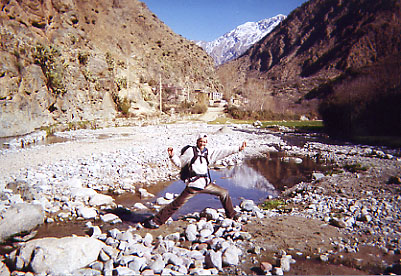 The Snows of Kilimanjaro. Read Pamuk.
The Snows of Kilimanjaro. Read Pamuk.
October 8: Discuss Snow and Istanbul. Lecture on Pamuk. Read Proust and Silko.
October 15: Gardens: Civilized and Natural. Discuss Gardens in the Dunes and Swann's Way. Read Black Water.
October 22: Midterm. Close Textual Analysis and Improvised Nature Writing due. Presentations, discussion, and lecture.Discuss Black Water. Read Woolf.
October 29: Seas and Poisonous Waters. Discuss The Waves. Read Coelho.
November 5: Deserts: Discuss The Alchemist.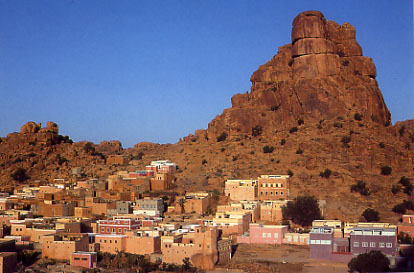 Lecture on Ordinary/Special World Campbell mythology journey. Read Mahfouz.
Lecture on Ordinary/Special World Campbell mythology journey. Read Mahfouz.
November 12: Three Novels of Ancient Eygpt and Voices from the Other World. Lecture on Mahfouz. Read El Saadawi.
November 17: God Dies by the Nile. Read The Alexandrian Quartet.
December 3: Nature films and improvisational writing. Rough drafts of final due. Discuss The Alexandrian Quartet.
December 10: Nature films and improvisational writing.
December 17: Final papers due. Global Food Fest and Nature Appreciation Party.
Student Papers
Natural Conquest by Phan L. Xi
Mother, Lover, Whore? by DaMond Taylor
The belief that thinking beings are part of a vast physical order can awaken a kind
of awe, wonder, even natural piety. The reflection which moves us is that thought, 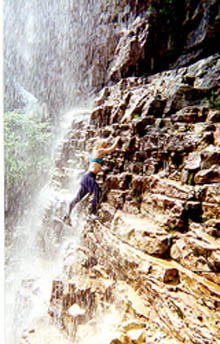
feeling, moral aspirations, all the intellectual and spiritual heights of human
achievement, emerge out of the depths of a vast physical universe which is itself,
over most of its measureless extent, lifeless, utterly insensitive to our purposes,
pursuing its path by inexorable necessity.
This course will focus on the evolution of attitudes toward nature, especially as
they have been both reflected in and influenced by writers from Thoreau to the present. Among the
topics to be considered will be the recognition of mountains and deserts as sublime landscapes; the
significance of hunting; and the growing prominence of Native American, Arabic, and Asian natural
values within American literature in English.
. 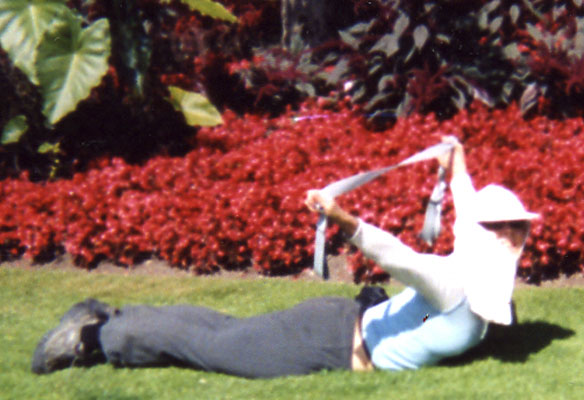
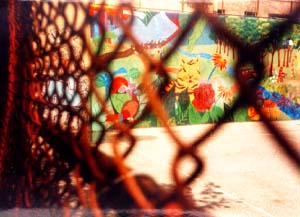
The books and poems ask how a human knows when sickness has set in. What is healthy?
Discussing the books, we'll trace relationships between physical sickness, psychological sickness,
and spiritual sickness.
We'll talk about how greed and selfishness, rampant consumerism, and mindless materialism can cause sickness..
We'll also ask whether nature is morally neutral, and what this means. Are humans morally neutral, for instance, in their
scientific dealings with the physical world, as they ravage the environment for anything that fulfills their fantasies or greed?
Extended List
American
Late Harvest: Rural American Writing . Ed. David R. Pichaske. Paragon House, 1991.
Wendell Berry. The Memory of Old Jack . HBJ, 1974.
Mary Oliver. American Primitive . Little Brown, 1983.
Annie Dillard. Pilgrim at Tinker Creek . Harper Perennial, 1974.
Leslie Marmon Silko. Ceremony. Penguin, 1977.
Gary Snyder. Turtle Island. New Directions, 1974.
Edward O. Wilson, Biophilia
Scott Slovic and Terrell Dixon, Being in
the World
Aldo Leopold, A Sand County Almanac (Ballantine)
Barry Lopez, Crossing Open Ground (Random House)
Kathleen Norris, Dakota: A Spiritual Geography (Houghton
Mifflin)
Scott Russell Sanders, Staying Put (Beacon)
Gary Snyder, The Practice of the Wild (North Point)
Walt Whitman: "Song of Myself" and other Leaves of Grass such as
"Inscriptions", "Starting from Paumanok"
Glotfelty, Cheryll and Harold Fromm, Ecocriticism Reader
Nash, Roderick. Wilderness and the American Mind
Thoreau, Henry David. Walking and Walden
Muir, John. The Mountains of California
Leopold, Aldo. A Sand County Almanac
Abbey, Edward. Desert Solitaire
Oliver, Mary. New and Selected Poems
Berry, Wendell. Collected Poems 1957-1982
Buell, Lawrence. The Environmental Imagination: Thoreau, Nature Writing, and
the Formation of Culture
Garb, Yaakov Jerome. "Perspective or Escape? Ecofeminist Musings on
Contemporary Earth Imagery." Reweaving the World: The Emergence of
Ecofeminism. Ed. Irene Diamond and Gloria Feman Orenstein
Garber, Frederick. Thoreau's Fable of Inscribing
Griffin, Susan. "A Collaborative Intelligence." The Eros of Everyday Life:
Essays on Ecology, Gender and Society
Meinig, D. W. "The Beholding Eye: Ten Versions of the Same Scene." The Interpretation
of Ordinary Landscapes: Geographical Essays. Ed. D. W. Meinig
Ryden, Kent C. "Of Maps and Minds: The Invisible Landscape." Mapping the
Invisible Landscape: Folklore, Writing, and the Sense of Place.
H. D. Thoreau, Walden (Penguin)
John Muir, The Mountains of California (Penguin)
Mary Austin, The Land of Little Rain (Penguin)
Aldo Leopold, A Sand County Almanac (Oxford)
William Faulkner, Go Down, Moses (Random House)
Gary Snyder, Turtle Island (New Directions)
A. R. Ammons, Selected Poems (Norton)
Mary Oliver, House of Light (Beacon)
John McPhee, Encounters with the Archdruid (1971)
H. St. J. de Crevecoeur, Letters From an American Farmer (1782)
Lewis & Clark, Journals (1804-1806)
Edward Abbey, Desert Solitaire (1968)
John McPhee, The Control of Nature (1989)
Edward Abbey, The Monkeywrench Gang (1975)
Terry Tempest Williams, Refuge 1991)
Anne Matthews, Where the Buffalo Roam (1992)
Wendell Berry, A Place on Earth (1983)
The Norton Book of Nature Writing (Finch & Elder, Norton, 1990)
White Silk and Black Tar (Spencer, Bergamont Books, 1990)
Alaska Quarterly Review: Alaska Native writers
(Vol. 4, No. 3 & 4)
Mississippi Solo (Harris, Harper & Row,)
Refuge: An Unnatural History of Family and Place (Williams,)
Lorraine Anderson (ed.), Sisters of the Earth
Aldo Leopold, A Sand County Almanac
Craig Lesley, Winterkill
Terry Tempest Williams, Refuge
Crevecoeur. Letters from an American Farmer, 1782; Sketches of Eighteenth
Century America: More Letters from an American Farmer. Ed. Albert E.
Stone. New York: Penguin, 1981.
Henry David Thoreau. The Natural History Essays.
Sarah Orne Jewett. Country of the Pointed Firs.
Willa Cather. Death Comes for the Archbishop.
William Faulkner. Go Down, Moses.
Aldo Leopold. A Sand County Almanac.
Loren Eiseley. The Immense Journey.
Rachel Carson. Silent Spring.
Wendell Berry. Home Economics.
Lewis Thomas. The Lives of a Cell: Notes of a Biology Watcher.
This Incomparable Land . Thomas Lyon, ed. Penguin
A Sand County Almanac . Aldo Leopold. Ballantine.
[Walden . Henry David Thoreau.
Lyon, Thomas J. (Ed.) - This Incomperable Lande
Hawthorne - Young Goodman Brown and Other Stories
Leopold - A Sand County Almanac: With Essays on Conservation from Round River
London - The Call of the Wild
Chekhov - The Cherry Orchard
(Faulkner) Six Great Modern Novels
Nelson - Primis: Literature and the Environment
The Pastoral Tradition
"To Sir Robert Wroth" (Ben Jonson)
"The Praises of a Countrie Life" (Jonson)
"To Penshurst" (Jonson)
Passage in Letters from an American Farmer
(Crevecoeur)
"Agrarian Values in an Urban Society: The
Ruhr Country" Virginia Forests , Winter 1991
Film: Land
Film: The Grapes of Wrath
The Grapes of Wrath (John Steinbeck)
The Land Ethic
A Sand County Almanac with Essays on Conservation
(Aldo Leopold)
"An Indian at the Burial-place of His Fathers"
( W. C. Bryant)
"The Ohio," The Ornithological Biography
(J. J. Audubon)
"The Rhodora" (R. W. Emerson)
"Apparently with No Surprise" (E. Dickinson)
January 26 Stewardship
Film: Timber on the Move
Virginia Wildlife (Stewards of the Land: A Special
Edition), December 1992
"Inscription for an Entrance to a Wood" (Bryant)
"The Forest Theatre Presents 'Trees Don't Live Forever,'"
Virginia Forests , Fall 1994
Moss Always Grows on the North Side of Trees: Forestry
and Wildlife Myths (VDF)
"Three Models of Forest Management in the Pacific
Northwest," Virginia Forests , Winter 1994
Film: Ready for Harvest and Forests: A Growing Concern
Literature, Art and the Land
Walden (H. D. Thoreau)
Walden
Explication by Small Groups
"The Snow-Storm" (R. W. Emerson)
"Snowflakes" (H. W. Longfellow)
"The April Snow" (Jones Very)
"To a Locomotive in Winter" (Walt Whitman)
O Pioneers! (Willa Cather)
The Holy Season: Walking in the Wild (Al Stewart)
"The Holy Season," "Under the Sycamore Leaf"
"Insured," "Sunday Morning Deer," "Arbutus,"
"Deptford Pinks," "The Deer Meadow," "A
Winter Ode," "Winter Fox," "Dulcimer Song,"
"Lesson in Biology,""The New Mule," "Into My
Own"
Explication by Small Groups
"The Message"
"The Letter"
"The Cattle in Their Summer Pastures"
"Morning of Snow"
"In the Kingdom at Yellow Mountain"
"Passage"
"Seasonal"
Pilgrim at Tinker Creek (Annie Dillard)
Reading the Landscape
A Gathering of Old Men (Ernest Gaines)
Deliverance (James Dickey)
Film: Deliverance
Robert Frost's poems
British
Coleridge
Keats
Shelley
Wordsworth
D.H.Lawrence
French
Poetry by Lamartine
La Nouvelle Heloise by Jean Jacques Rousseau
Arabic
The Sand Child by Tahar Ben Jalloun
Oceans
The Old Man and the Sea by Ernest Hemingway
Moby Dick by Herman Melville
Rivers
Thames River: Our Mutual Friend by Charles Dickens
Nile: Adrift on the Nile by Naguib Mahfouz
Hudson River: How to Survive as an Adjunct Professor by Julia Keefer
Seine (Paris):
Colorado River:
Africa: Heart of Darkness by Joseph Conrad
Mountains
Snows of Kilimanjaro by Ernest Hemingway
Deserts
Forests, Jungles, Trees
| Eco-criticism |
William Rueckert may have been the first person to use the term ecocriticism (Barry 240). In 1978, Rueckert published an essay titled Literature and Ecology: An Experiment in Ecocriticism. His intent was to focus on “the application of ecology and ecological concepts to the study of literature.” (Reprinted in The Ecocritism Reader on p. 107)
Ecologically minded individuals and scholars have been publishing progressive works of ecotheory and criticism since the explosion of environmentalism in the late 1960s and 1970s. However, because there was no organized movement to study the ecological/environmental side of literature, these important works were scattered and categorized under a litany of different subject headings: pastoralism, human ecology, regionalism, American Studies etc. British Marxist critic Raymond Williams, for example, wrote a seminal critique of pastoral literature in 1973, The Country and the City, which spawned two decades of leftist suspicion of the ideological evasions of the genre and its habit of making the work of rural labour disappear even though Williams himself observed that the losses lamented in pastoral might be genuine ones, and went on to profess a decidedly green socialism.
Another early ecocritical text, Joseph Meeker's The Comedy of Survival (1974), proposed a version of an argument that was later to dominate ecocriticism and environmental philosophy; that environmental crisis is caused primarily by a cultural tradition in the West of separation of culture from nature, and elevation of the former to moral predominance. Such 'anthropocentrism' is identified in the tragic conception of a hero whose moral struggles are more important than mere biological survival, whereas the science of animal ethology, Meeker asserts, shows that a "comic mode" of muddling through and "making love not war" has superior ecological value. In the later, "second wave" ecocriticism, Meeker's adoption of an ecophilosophical position with apparent scientific sanction as a measure of literary value tended to prevail over Williams's ideological and historical critique of the shifts in a literary genre's representation of nature.
As Glotfelty noted in The Ecocriticism Reader, “One indication of the disunity of the early efforts is that these critics rarely cited one another’s work; they didn’t know that it existed…Each was a single voice howling in the wilderness.” Nevertheless, ecocriticism—unlike feminist and Marxist criticisms—failed to crystallize into a coherent movement in the late 1970s, and indeed only did so in the USA in the 1990s.
In the mid 1980s, scholars began to work collectively to establish ecocritism as a genre, primarily through the work of the Western Literature Association in which the revaluation of nature writing as a non-fictional literary genre could function. In 1990, at the University of Nevada in Reno, Glotfelty became the first person to hold an academic position as a professor of Literature and the Environment, and UNR has retained the position it established at that time as the intellectual home of ecocriticism even as ASLE has burgeoned into an organization with thousands of members in the US alone. From the late 1990s, new branches of ASLE and affiliated organizations were started in the UK, Japan, Korea, Australia and New Zealand (ASLEC-ANZ), India (OSLE-India}, Taiwan, Canada and Europe.
In comparison with other 'political' forms of criticism, there has been relatively little dispute about the moral and philosophical aims of ecocriticism, although its scope has broadened rapidly from nature writing, Romantic poetry canonical literature to take in film, TV, theatre, animal stories, architectures, scientific narratives and an extraordinary range of literary texts. At the same time, ecocriticism has borrowed methodologies and theoretically-informed approaches liberally from other fields of literary, social and scientific study.
Glotfelty's working definition in The Ecocriticism Reader is that "ecocriticism is the study of the relationship between literature and the physical environment" (xviii), and one of the implicit goals of the approach is to recoup professional dignity for what Glotfelty calls the "undervalued genre of nature writing" (xxxi). Lawrence Buell defines “‘ecocriticism’ . . . as [a] study of the relationship between literature and the environment conducted in a spirit of commitment to environmentalist praxis” (430, n.20).
Simon Estok noted in 2001 that “ecocriticism has distinguished itself, debates notwithstanding, firstly by the ethical stand it takes, its commitment to the natural world as an important thing rather than simply as an object of thematic study, and, secondly, by its commitment to making connections” (“A Report Card on Ecocriticism” 220).
More recently, in an article that extends ecocriticism to Shakespearean studies, Estok argues that ecocriticism is more than “simply the study of Nature or natural things in literature; rather, it is any theory that is committed to effecting change by analyzing the function–thematic, artistic, social, historical, ideological, theoretical, or otherwise–of the natural environment, or aspects of it, represented in documents (literary or other) that contribute to material practices in material worlds” (“Shakespeare and Ecocriticism” 16-17). This echoes the functional approach of the cultural ecology branch of ecocriticism, which analyzes the analogies between ecosystems and imaginative texts and posits that such texts potentially have an ecological (regenerative, revitalizing) function in the cultural system (Zapf, "Literary Ecology").
As Michael P. Cohen has observed, “if you want to be an ecocritic, be prepared to explain what you do and be criticized, if not satirized.” Certainly, Cohen adds his voice to such critique, noting that one of the problems of ecocriticism has been what he calls its “praise-song school” of criticism. All ecocritics share an environmentalist motivation of some sort, but whereas the majority are 'nature endorsing' (as Kate Soper puts it in "What is Nature?" (1998)), some are 'nature sceptical'. In part this entails a shared sense of the ways in which 'nature' has been used to legitimise gender, sexual and racial norms (so homosexuality has been seen as 'unnatural', for example), but it also involves scepticism about the uses to which 'ecological' language is put in ecocriticism; it can also involve a critique of the ways cultural norms of nature and the environment contribute to environmental degradation. Greg Garrard has dubbed 'pastoral ecology' the notion that nature undisturbed is balanced and harmonious ("Ecocriticism" 56-58), while Dana Phillips has criticised the literary quality and scientific accuracy of nature writing in "The Truth of Ecology". Similarly, there has been a call to recognize the place of the Environmental Justice movement in redefining ecocritical discourse (see Buell, "Toxic Discourse").
Those of you interested in eco-criticism should go to the Association for the Study of Literature and the Environment www.asle.org to get the latest in this area. I followed this track at the recent MLA 2012 convention in Seattle and it is the most important criticism of the twenty-first century because of climate change, globalism, and ecological disaster.
In this course, Major Twentieth Century Writers, we arrange the books in clusters according to elements of nature and geographical locations. Under American Southwest Desert we have Gardens in the Dune by Leslie Marmon Silko and Oil by Upton Sinclair, also about early twentieth century America when the frontier was being exploited for oil and other natural resources, and the indigenous peoples used and abused to serve the European settlers’ greed. Only the natives seek the beauty of the flowers in the desert. Under Northwest African desert we have Jean Marie Gustave Le Clezio’s The Desert, Tahar Ben Jelloun’s The Sand Child, and Albert Camus’ The Plague, all of which take place in the second half of the twentieth century. In the Northeast African desert of the Nile Valley, a warm, fertile, earthly paradise, that has since become polluted and impoverished with “globalization,” we have God Dies by the Nile by Nawal el Saadawi, in the 1970s contrasted with the opulent, powerful world of the Pharaohs as in Naguib Mahfouz’ Akhenaten. What do the constant presence of a blinding sun and a cold star-filled night do to words and stories? What is the difference between a group of people who stay in their gorgeous oasis by the Nile to the traveling nomads who brave dust storms as they move across the Sahara, or that population in Oran who became quarantined with the plague? How does el Saadawi orchestrate the position of the sun in the sky with the horrific events that happen to her characters?
Then we examine at water in Virginia Woolf’s The Waves and Joyce Carol Oates Black Water. Woolf’s fluid style of long, complex/compound sentences ebbing and flowing through similes, metaphors, and personification that compare the passage of the sun through one day and the patterns it makes on the sea to the finest jewels and furnishings of human civilization, as if nature were not beautiful enough by herself. By contrast, Silko usually describes her nature literally, the way the indigenous people experienced it. She frames her story, a prose poem of six dramatic monologues that compress the entire lives of her six characters, with these descriptions of nature, with a haunting foreshadowing of her eventual surrender to water when she, at 59 years of age, walked into the Thames with stones in her pockets. In Black Water the protagonist is drowning in every chapter in a recursive, flashback narrative style, but here the water is black from the fuel of the car that Senator Kennedy drove at Chappaquidick, and the heroine is caught in a vicious spiral of rapidly-filling lungs, Oedipal transfers, her own impotence, her “date’s” selfish, successful survival, physically and politically, and surreal flashbacks of her brief life, as she takes forever, the whole book, to drown. Oates’ word choice, her fragmented phrases, and her lack of conventional paragraph structure reflect the treacherous action of these poisonous waters.
Water freezes into snow in Nobel-Prize winning author Orhan Pamuk’s Snow, where snow’s purity, fun, and deceptive blanket cover the atrocious acts of terrorism, the brutality of local police, the cruelty and obsession of the Islamists, and even the petty jealousies and affairs of some of the characters. The themes of the book are literally pictured as a snowflake and the protagonist’s poems fall out of his subconscious like exquisite flakes of snow. Without the snow, a different story and style would emerge.A mountain is the symbol of traditional dramatic structure—the Myth of Sisyphus—the climb to the climax, followed by the denouement. It’s a struggle to get there, but at the top we are rewarded with a greater vision, even if compromised or exhilarated by thinner air. When hiking alone, we enter a world of animals, leaves, rocks, sky, that is beyond linguistic description, and the various components of self dissolve into the wilderness. Nobel-Prize winner Gao Xi Jiang documents his personal soul-searching journey through the mountains of China after a cancer scare, by deconstructing the narrative into four personae—he, she, you, and I—to not only show how self merges with wilderness and ancient civilizations, but how self is recovered and renewed after suppression by the communist Maoist regime.
In the African jungle we pit Joseph Conrad’s Heart of Darkness against Chinua Achebe’s Things Fall Apart. Here is a scary wilderness, more heated and unpredictable than the other environments, filled with deadly snakes, and insects that give you malaria and other diseases. It was the undoing of the British Empire, and even scared the Nigerian natives into sacrificing their children to appease the Oracles of the “Evil Forests.” These books are usually interpreted in terms of racism, but if we delve deeper, we see that race is simply a result of geography, an evolution of skin color based on Darwinian adaptation to sun and heat. The native people created a culture that could survive in this challenging environment, but, to this day, “multinationals” have tried to exploit it in such a way that things are still falling apart.
Group reunites for the second and final time. Neville, a famed poet, realizes fame is not a panacea. Susan is unfulfilled. Bernard thinks solitude is his undoing (217). Louis is still unsure; he is ambivalent. Like his childhood days, Louis prefers to cloister himself in his attic in order to protect himself from ridicule. He is "marmoreal" on the outside, but intrinsically weak (219). Jinny is the courageous one. Though she suffers the same as the others, she finds affirmation in the smallest encounters: "Sometimes only by the touch of a finger under the tablecloth as we sit dining" (221). Rhoda comments on the wave-like motion of life, how it breaks down only to build back up again (232). Bernard concludes by affirming the continuity of life, the "happy concatenation of one event following another" (334).
IX. Night.
Bernard is last to speak. Spends the remainder the text summing up his life and those of the others. Bernard takes on Death and the waves crash on the shore.
Originally, Woolf intended to call the novel The Moths:
1. 139 Saturday 18 June, 1927 Slowly ideas begin trickling in; & then suddenly I rhapsodised (the night L. dined with the apostles) & told over the story of the Moths, which I think I will write very quickly, perhaps in between chapters of that long impending book on fiction. Now the moths will I think fill out the skeleton which I dashed in here: the play-poem idea: the idea of some continuous stream, not solely of human thought, but of the ship, the night&c, all flowingtogether:intersected by the arrival of the bright moths. A man & a woman are to be sitting at a table talking. Or shall they remain silent? It is to be a love story: she is to finally let the last great moth in. The contrasts might be something of this sort: she might talk, or think, about the age of the earth: the death of humanity: then moths keep on coming. Perhaps the man could be left absolutely dim. France: near the sea; at night; a garden under the window. But it needs ripening. I do a little work on it in the evening when the gramophone is playing late sonatas. (The windows fidget at their fastenings as if we were at sea.)
2. 203 Wednesday 7 November, 1928 Yes, but the Moths? That was to be an abstract playpoem. That was to be an abstract mystical eyeless book….
3. 229 Tuesday 28 May, 1929 I am not trying to tell a story. Yet perhaps it might be done in that way. A mind thinking. They might be islands of light–islands in the stream that I am trying to convey: life itself going on. The current of the moths flying strongly this way. A lamp & a flower pot in the centre. The flower can always be changing. But there must be more unity between each scene than I can find at present. Autobiography it might be called. How am I to make one lap, or act, between the coming of the moths, more intense than another; if there are only scenes? One must get the sense that this is the beginning; this the middle; that the climax–when she opens the window & the moth comes in. I shall have the two different currents–the moths flying along; the flower upright in the centre; a perpetual crumbling & renewing of the plant. In its leaves she might see things happen.
4. 254 Monday 16 September, 1929 Six weeks in bed now would make a masterpiece of Moths. But that wont be the name. Moths, I suddenly remember, dont fly by day. And there cant be a lighted candle. Altogether, the shape of the book wants considering--& with time I could do it.
Now Woolf refers to the novel as The Waves:
5. 285 Sunday 26 January, 1930 The Waves wont sell more than 2000 copies. I am stuck fast in that book–I mean, glued to it, like a fly on gummed paper. Sometimes I am out of touch; but go on; then again feel that I have at last, by violent measures–like breaking through gorse–set my hands on something central. Perhaps I can now say something quite straight out; & at length; & need not be casting a line to make my book the right shape. But how to pull it all together, how to compost it – press it into one – I do not know; nor can I guess the end–it might be a gigantic conversation. The interludes are very difficult, yet I think essential; so as to bridge & also give a background–the sea; insensitive nature--I dont know. But I think, when I feel this sudden directness, that it must be right: anyhow no other form of fiction suggests itself except as a repetition at the moment.
6. 300 Wednesday 9 April, 1930 What I now think (about the Waves) is that I can give it in a very few strokes the essentials of a person’s character. It should be done boldly, almost as caricature…. The abandonment of Orlando & Lighthouse is much checked by the extreme difficulty of form—as it was in Jacob’s Room. I think this is the furtherest development so far; but of course it may miss fire somewhere…. It is bound to be imperfect. But I think it possible that I have got my statues against the sky.
7. 312 Wednesday 20 August, 1930 The Waves is I think resolving itself (I am at page 100) into a series of dramatic soliloquies. The thing is to keep them running homogeneously in & out, in the rhythm of the waves. Can they be read consecutively? I know nothing about that. I think this is the greatest opportunity I have yet been able to give myself; therefore I suppose the most complete failure. Yet I respect myself for writing this book. Yes—even though it exhibits my congenital faults.8. 339 Saturday 20 December, 1930 It occurred to me last night while listening to a Beethoven quartet that I would merge all the interjected passages into Bernard’s final speech, & end with the words O solitude: thus making him absorb all those scenes, & having no further break. This is also to show that the theme effort, effort, dominates: not the waves: & personality: & defiance: but I am not sure of the effect artistically; because the proportions may need the intervention of the waves finally so as to make a conclusion.
9. 343 Tuesday 30 December, 1930 What it wants is presumably unity; but it is I think rather good (I am talking to myself over the fire about The Waves). Suppose I could run all the scenes together more?--by rhythm, chiefly. So as to avoid those cuts; so as to make the blood run like a torrent from end to end—I dont want the waste that the breaks give; I want to avoid chapters; that indeed is my achievement, if any here: a saturated, unchopped, completeness; changes of scene, of mood, of person, done without spilling a drop. Mow if it cd. Be worked over with heat and currency thats all it wants. And I am getting my blood up. (temp. 99)
From Vol. 4 of The Diary of Virginia Woolf
10. 34 Tuesday 7 July, 1931 O to seek relief from this incessant correction ( Im doing the interludes) & write a few words carelessly. Still better, to write nothing; to tramp over the downs, blown like thistle. As irresponsible. And to get away from this hard knot in which my brain has been so tight spun—I mean The Waves.
11. 35 Tuesday 14 July, 1931 I had meant to say that I have just finished correcting the Hampton Court scene (This is the final correction, please God.)
12. 35-6 Friday 17 July, 1931 Yes. This morning I think I may say I have finished. That is to say I have once more, for the 18th time, copied out the opening sentences. L. will read it tomorrow; & I shall open this book to record his verdict. My own opinion,--oh dear--, its a difficult book. I don’t know that I’ve ever felt so strained. And I’m nervous, … And it may be a failure. And I can’t do anymore. And I m inclined to think it good but incoherent, inspissate; one jerk succeeding another. Anyhow it is laboured, compact. Anyhow I had a shot at my vision & if its not a catch, its a cast in the right direction. But I’m nervous.
13. 36 Sunday 19 July, 1931 "It is a masterpiece" said L. coming out to my lodge this morning. "And the best of your books". This note I make; adding that he also thinks the first 100 pages extremely difficult, & is doubtful how far any common reader will follow. But Lord! What a relief! I stumped off in the new rain to make a little round to Rat Farm in jubilation, & am almost resigned to the fact that a Goat farm, with a house to be built, is now in process on the slope near Northease.
The End First by Bernard
1. 241 "And being in love for the first time, I made a phrase, for a hole had been knocked in my mind, one of those sudden transparences through which one sees everything."
2. 241 "The wax --- the virginal wax that coats the spine melted in different patches for each of us. . . . Louis was disgusted by the nature of human flesh; Rhoda by our cruelty; Susan could not share; Neville wanted order; Jinny love; and so on. We suffered terribly as we became separate bodies."
3. 245 "Nothing, nothing, nothing broke with its fin that leaden waste of waters. Nothing would happen to lift that weight of intolerable boredom. . . . We grew; we changed; for, of course, we are animals. . . . We exist not only separately but in undifferentiated blobs of matter."
4. 251 "Let us again pretend that life is a solid substance, shaped like a globe, which we turn about in our fingers. Let us pretend that we can make out a plain and logical story, so that when one matter is despatched --- love for instance --- we go on, in an orderly manner, to the next."
5. 252 "Rhoda come wandering vaguely. . . . The willow as she saw it grew on the verge of a grey desert where no bird sang. The leaves shriveled as she looked at them, tossed in agony as she passed them."
6. 252 "Then Jinny came. . . . She was like a crinkled poppy, febrile, thirsty with the desire to drink dry dust. . . . So little flames zigzag over the cracks in the dry earth. She made the willows dance, but not with illusion; (Check online sources for the continuation of this documentation.)
It was unlike her to be so bold, so flirtatious. Asking The Senator archly, "'Man'—and not woman? Isn't 'woman' a political animal too?"The Senator concludes this seminar by kissing Kelly forcefully: "how swiftly this was happening, how swiftly after all, yet as he kissed her after the first moment she stood her ground firmly, hells dug into the crusty sand, she leaned to the man taking the kiss as if it were her due, a natural and inevitable and desired development of their conversation. And bold too, giddy too, parrying his tongue with her teeth."
"Some women. Sometimes. We know that. But, most of the time, women find politics boring. The power-play of male egos. Like war. Eh? Boring in its monotony, beneath all the turmoil?"
But Kelly was not to be led. As if this were a seminar, and Kelly Kelleher one of the stars, she said frowning, "Women can't afford to think of politics as 'boring'! Not at this point in history. The Supreme Court, abortion—"
In the subsequent hours, Kelly was to radically revise her opinion of The Senator.
It could not be said that in those six hours Kelly Kelleher had fallen in love with The Senator, nor could it be said that The Senator had fallen in love with her, for such matters are private andunknowable; and what the future may have brought (in contrast to what the events of that night did in fact bring) will forever remain unknowable.The unexplained arbitrariness of Oates's distinction between what is "private and unknowable" and what is accessible to the novelist (even though it's "interior, private") suggests an intentional anxiety about the invasiveness of the novelist in prying into the character's thoughts. Where can this line be drawn? And why does the novelist herself draw it?
Except: Kelly certainly revised her opinion.
Thinking how instructive, how purifying for the soul (smiling into a mirror of the guest room that was hers at Buffy's would have been hers again for the night of the Fourth had she not decided so precipitously to accompany The Senator back to the mainland) to learn that you are fallible, to be proven wrong.
Even if it's merely interior, private proof.
Even if the one you've so carelessly misjudged never knows.
I don't think this form of invasion is as clearly gendered as The Senator's, but its clear opposition to the masculine mode of invasion is fairly clear. And there is a tendency to associate the intense novelistic depiction of consciousness with femininity—Richardson's heroines and Austen, with her "free indirect discourse, but more significantly Woolf and Joyce's Penelope section of Ulysses, perhaps the ne plus ultra of stream-of-consciousness.
The question comes about when one weighs these modes of invasion against one another: bluntly, which is worse? The novel does seem to ask this question, as the issue of blame is so inextricably linked to its subject matter, the Chappaquiddick incident. Oates doesn't unequivocally reach the same conclusion so many Americans did at the time of Chappaquiddick: that The Senator did it. Kelly Kelleher in many moments almost blames herself, blames her instant dependence on The Senator.How do blame and guilt work in The Patience Stone?Contrast Woolf's modernist to Oates' postmodern technique. How are they similar and how do they differ? How does the role and theme of water change?
Latin American Nature Poetry While Latin America was initially a country of natural marvels, tropical paradise, lush rainforests, gorgeous mountains, it was also marred by industrial development, poverty, and war. Its poetry combines descriptions of nature with surreal and magical realist techniques.
In a first epoch the influence of the surrealist movement in poetry upon the Latin-American poets of the 1920’s was exiguous as it is witnessed by the reaction of the mature poets Vicente Huiodobro and Cesar Vallejo then living in the Surrealist Paris. Huidobro opposed Surrealism on the grounds that the surrealists in their pursue for the total lack of control of the mind in writing, converted poetry in a spiritist trick. He argued also that poetry is created more than ever by the poet with all the strength of his awaken senses. The poet has not a passive but an active role in the management and gadget of the poem otherwise-addressing- the surrealists ‘if we follow your theories we pave the way for the improvisers’. Poetry in this way becomes a banal indulgence. No, poetry according to Huidobro, exudes either from a superconscience or has its pedigree in the inner life of the poet who is caught by a poetical delirium. He also opposes the view that every one is little bit mad and little bit a poet of which the surrealists made a solid ground for the creativity of the poet. The Chilean poet does deny that the controlling reason, that is not evident in surrealist poetry making, is of a controlling nature but that it lies in the same level than that of imagination. Against all other ‘isms’ Huidobro opposes his own one, ‘creationism’ which -in a paraphrases- stands for the projection of creativity to the foreground in every act of writing poetry, assisted by a superconscious mind without a all pervading reason but that one levelled with imagination.As with Neruda’s Tentativa where he abandoned the incursion into surrealist literary paraphernalia, Vallejo with his Trilce experienced a quite similar saga. Vallejo published Trilce the same year he departed for Paris, 1922 -the first Surrealist manifest was published in 1925. Comparing Vallejo’s previous work, for example Los Heraldos Negros one can see a big difference in style with Trilce. These difference shows that Vallejo was already very much acquainted with the literary tools of the French avant-garde that served as substratum for the Surrealist movement.
Cesar Vallejo, although having instituted friendship with the majority of the surrealists, did not agree in the most of their postulates. A difference from Huidobro, Vallejo impugns surrealism more from the social vantage view than formally. About the devise most widely associated with surrealism, automatic writing, Vallejo refers it as ‘abracadabra method’. He acknowledges nevertheless that at certain point, surrealism was sympathetic to the proletarian revolution, which was lovable from the humanist view that is imbedded in art.
Cesar Vallejo’s compatriots Xavier Abril, Cesar Moro and Emilio Adolfo Westphalen promoted with enthusiasm the surrealist mode in Perú. Apparently the influence came either from the Spanish version of surrealism or from particular surrealists as Breton or Éluard.
The poetry of Xavier Abril Dificil Trabajo (1935) is characterised by his daredevil images, the avant-garde rhetoric and the surrealist hermetism. Cesar Moro was one of the few Latin-American writers of this period that published surrealist poems in French and in Spanish. Moro went to Paris in 1925, joined the surrealist movement and collaborated in the magazine Le surrealism au Service de la Revolution. Along with Emilo Adolfo Westphalen and Moreno Jimeno funded the surrealist magazine El uso de la palabra in 1933. Moro moved to Mexico. In 1940 and along with André Bretón and Wolfgang Paalen in Mexico too they organised an international exhibition of Surrealist Art.
Emilio Adolfo Westphalen also followed the prescribed rules of Surrealism. The poems of his first book Insulas extranñas (1933) characterises by the use of psychic automatism. These poems lack syntactic structure and are deprived of images and punctuation. Abolición de la muerte (1935) is more legible and contains themes as time, existence and the beyond.
Buenos Aires was another centre of surrealist influence. Argentinean poetry before cultivator of gauchesque themes and modernist ones endured a complete transformation when Jorge Luis Borges came back form Madrid in 1921. Borges introduced Ultraism that was the Spanish version of Huidobro’s Creationism.
Many of the Argentinean poets arrived to surrealism under the influence of the Spanish poets of the Generación de 1927. Ultraism in Argentina was a movement that helped to prepare the terrain for surrealism. Surrealism as a formal concertation appeared in 1928 when Aldo Pellegrini founded the magazine Que (1928-30). However the first surrealists did not have a great success due to they were caught in rivalries between a group called "Boedo" and the "Martinfierrists". Twenty years later, in 1948, the Argentinean surrealists organised themselves again around the magazine Ciclo (1948-49). At this time some previous militant surealsits had abandoned the files but new blood was infused and the surrealist reorganized themselves around the magazine A partir de 0 (1952-56) directed by Enrique Molina. The surrealists also collaborated in the establishment of Letras y Lineas (1953-55)
In Chile surrealism formally started in July of 1938 with the forming of the group Mandrágora which included Braulio Arenas, Jorge Cáceres, Teófilo Gómez-Correa, Armando Gaete, Mariano Medina, Fernando Onfray, Gustavo Ossorio, Gonzalo Rojas-Pizarro, Mario Urzula y Eugenio Vidaurrazaga. The Chilean surrealist celebrated their first art exhibition in 1941 and an international organisation in 1948.Pablo Neruda’s Tentativa del Hombre Infinito antedates the publication of the first Manifest of Surrealism by two years. In this book Neruda’s suppression of capital letters, absence of punctuation, irregular verse, and telegraphic syntax resembles very much automatic writing -surrealism’s central tenet- and it is impossible to not detect Neruda’s acquaintance with the poetry of the ‘isms’ that preceded surrealism, cubism, dadaism and futurism. Apparently, influenced by them, Neruda considered unnecessary to follow their latest expression, namely surrealism. In biographical accounts Neruda tells how he knew all about the movements in literature in Europe by the time he was studying French at the College. It is impossible not to suspect that Neruda, previous to the publication of Tentativa…surely knew of the French symbolist poets and their every more distancing the cause from the effect in their construction of metaphors and also their tendency to almost total estrangement of the image, which makes it to come closer to the fantastic representation, proper of the absurdity of dreams; all these futures that entered in the surrealist terminology as automatic writing. Thus, Neruda neither opposing nor openly acclaiming surrealism could be concluded that he was not influenced by it.
Surrealism in Venezuela came to fruition till 1936 when the group Grupo Viernes was founded. The group launched a manifest in the manner of the French surrealists. Among it s members were Luis Fernando Alvarez, José Ramon Heredia, Angel Miguel Queremel, Pablo Rojas Guardia, Vicente Filardo, Rafael Olivares Figueroa and the literary critiquer Fernado Cabrices. The mentor and speaker of the group was Angel Miguel Queremel.
The different French avant–garde movements of the two first decades of the twentieth century echoed in Mexico: futurism with the name of stridentism, Dadaism and cubism. The poets that founded the magazine Contemporáneos (1928-31) directed by Bernardo Ortiz de Montellano introduced surrealism. Among the most important poets of that period counts Carlos Pellicer, Xavier Villaurrutia, Jaime Torres Bodet. Jose Gorostiza y Salvador Novo. These poets embodied in their works all the techniques of the surrealist literature but they expressed the same in themes of solitude, bitterness, pessimism and death.
André Breton visited Mexico and was invirted to deliver a few talks. He became enchanted by the popularity of surrealism there. Wolfgang Paalen came to Mexico also and he organised an international surrealist exhibition in 1940. In 1942 Paalen founded the surrealist magazine Dyn (1942-44). Benjamin Perret followed his compatriots to Mexico and stayed in Mexico for five years. It is this environment that Octavio Paz grow up. It is perhaps him who most did for both the propagation and the accomplishment of the resources surrealism bequeathed to literature. In his prose books he always acknowledges his debt to surrealism. But is in his book La busqueda del comienzo he is more explicit in what surrealism meant for him and pays tribute to that legacy.
In March 1950 Breton and Perret published Almanach surréaliste du demi-siécle in which they included the name of Octavi oPaz as one of the selected ones.
In Cuba the surrealist influence is not transparent but Roberto Fernandez Retamar designates Felix Pita Rodriguez, Ramón Guirao y Lorenzo García Vega among the Cuban poets that show surrealist elements in their poetry. Apparently the cuban poets were not unaware of the avant-garde literature of the times as is witnessed by the magazine Revista de Avance (1927-30) but they were more troubled with fighting the dictatorship that plagued the Island of these days. Poets like Mario Brull has surrealist futures. The frequent use of ‘jitanjáforas’ and other onomatopoetic resources found in his poetry resembled very much the word games used by the French surrealists of the time (1930’s).
In the view of some scholars like John S. Brushwood the 1930’s is an important period of prose writing in Latin-America because the techniques of the avant-garde appear with growing regularity. He however maintains that there are exceptions in Mexico that reveal an early acceptance in fiction of their techniques. During the 1920’s the use of free association, dream-like images and the disproportionate use of time was of common use in fiction. Gilberto Owen, La llama Fria, 1925; Novela como nube, 1928; Jaime Tores Bodet, Margarita de Niebla, 1927; La educación sentimental, 1930; Salvador Novo, El joven, 1928; Xavier Icaza, Panchito Chapopote, 1928; Arqueles Vela, El café de nadie, 1926; Jose Marinez Sotomayor, La rueca de aire, 1930 and La Malahora (1923) de Mariano Azuela as he in this novel incorporates fragmented and retrospective scenes and the disproportionate use of time. Is worth mentioning that the majority of the above mentioned were members of the Stridentist movement which was the Mexican version of Futurism.
The time between 1935 and 1946 can be considered as a period of experimentation with the surrealist elements. To these dates correspond Borges’ Historia general de la infamia (1935) and concludes with Miguel Angel Asturias El señor presidente (1946).
From 1946 onwards the surrealist legacy form an integral part of the Latin-American narrative and it is hard to disengage. Corresponded to a second generation of writers to make of that heritage the honour with which the Latin-American literature has been acknowledged. Now there has been a engaging debate about the terming of the Latin-American literature from this period onwards. The purposes of this paper is not to contribute to that debate but to make a recollection of the works of the most influential writers which show influences of the techniques first systematised by the French surrealist movement.
Alejo Carpentier’s Ecué-Yamba (1933) is situated in that period of surrealist experimentation, but for its treatment of the narrative and the use of the surrealist paraphernalia can be placed within his period of maturity. El Refrom the view of the surrealist le merveilleux with which Carpentier abandons surrealism to be with his own.
Manuel Rojas from Chile with Hijo de ladrón (1951) contributes to the second generation of surrealists. This work, written mainly as a realist novel, contains numerous examples of interior monologue, counterpoint resources, and the use of non-chronological time.
Some critics consider that Ernesto Sabato’s El tunel (1948) is an existentialist novel or even Freudian for the techniques in the use of language, nevertheless in my view it is of surrealist brand.
His Sobre héroes y tumbas (1962) is a clear example of surrealist literature. The reader is submerged in the caves of the unconscious and it is written with a rich stile in metaphors, symbols and dream-like elements.
Juan Rulfo from Mexico with his Pedro Páramo (1955) undertakes one of the most intrepid experiments in the modern novel. He appears to express his own concept of ‘mexicanity’ through the creation of an infernal environment where homicide, incest despotism and lechery reveals itself in a very poetical form. Rulfo seems to pussels the reader with the use of scenes that at first sight do not seem to be connected and with the non-chronological time.
Another mexican, Juan Jose Arreola is one of the best representatives of the genre. His works are like surrealist paintings. The short stories Varia Invención (1949) y Confabulario (1952) could well be called modern fables, but of a very abstract nature. The interpretations of the symbols in his works are entangled and hard to grasp in a first attempt. One would need to approach them from various vantagepoints.ino de este mundo (1949) is already a novel which shows a more sophisticated use of these elements and therefore not considered as surrealist properly speaking. It is however Los Pasos perdidos (1953) his masterpiece, an exploration of South America
The method of ‘automatic writing’ discovered and used by the surrealist poets, Andre Breton, Benjamin Perret, Antonín Artaud among the most influential within the surrealist movement, came to the knowledge of the most representative poets of the Latin-American avant-garde soon after the publication of the first manifest of the movement. These partly because some of them like Vicente Huidobro from Chile and Cesar Vallejo from Peru were in Paris when the surrealist movement started. Others like Octavio Paz from Mexico and Pablo Neruda from Chile came into contact with Surrealism in its second wind by the mid thirties. Pablo Neruda never ascribed himself to the movement of the ‘automatic writing’ the search for the infinite and ‘insanity’ as the best way to create poetry nor criticised it either. In a few declarations scattered among his thousands of texts Neruda distanced himself from the surrealist mode although preserved a deep friendship with Eluard and Aragon based in mutual respect and admiration in view of the part the two played during the years of the Popular Front.
One of the prevalent themes of mid-century and contemporary literature is terrorism. How does geography shape the tone and story of the terrorist plot? Orhan Pamuk's Snow tells the story of a terrorist plot, an insurrection, and performance art in a small town on the eastern side of Turkey in Anatolia during a snow storm. How do the configuration of a snowflake and the theme of the novel contribute to the dramatic intensity? Compare this to Sahar Khalifeh's Wild Thorns where Osamu and Adil plot against the Israelis and each other in a war-torn, hotter, desert climate. Does the snow make us forget more easily?Contrast the spare, stark descriptions of the nuclear holocaust in Marguerite Duras' Hiroshima Mon Amour against the funny, satirical descriptions of 9/11 through the many non-human narrators in Keefer's Un-Clashing Civilizations. What are the different author objectives and reader responses? In Duras' work and in reality, the nuclear bomb devastated the entire geography while the 9/11 attacks destroyed downtown Manhattan and thousands of people but still preserved the river, the wilderness, and even Central Park. How does genre, tragedy versus satire, frame these two different stories?How do you feel when you walk in the desert? What kind of stories are told and nurtured in the hot, dry, sunny environment? The Desert, Akhenaten, God Dies by the Nile, The Sand Child, and even Ceremony all tell tales of humans in desert climates. Some of these people are poor and struggling while others are pharaohs, mayors, and imams but the divide is usually great. How did the Nile nurture the fertile ancient Egyptian civilizations and then become the cesspool of twentieth century petromodernity and the poverty described in God Dies by the Nile?The ancient pyramid of Saqqara is in the distance. How does this kind of nature provide the "home" for Egyptian civilization, sun-worship, preservation of pyramids, and even dictate the women dress? Mahfouz' Akhenaten took place hundreds of years ago but the area looks much the same. How can this be? How have humans changed and not changed? What about this kind of land where desert and mountains create sandstorms?Why are mosques designed this way in the oasis in the valley? Tahar ben Jelloun's The Sand Child and Le Clezio's The Desert take place in Northwest Africa. How does this geography differ from Egypt?How does the American Southwest differ from the African desert? How do Leslie Marmon Silko's stories of Native Americans differ from the Bedouin stories?
Green Fascism and Dystopias When Margaret Atwood's new novel opens, her main character, Snowman, is sleeping in a tree, wrapped in a dirty bed-sheet, trying to survive in a world which has gone horribly wrong. Below him, strange animals called pigoons and wolvogs prowl, monstrous hybrids created by human beings who have all but wiped out their own species. Ruined tower blocks are visible in the nearby pleeblands and, further away, there are wrecked compounds where the elite used to live, work and play.
The climate has changed along with everything else, creating intense heat and sudden storms. Snowman's only protection from the elements consists of a pair of sunglasses with one lens missing, leaving him pathetically vulnerable to the monsters his family and friends have had a hand in making.
His name is an ironic reference to the abominable snowman, a mythic creature remembered from a long-ago North American childhood, and he has adopted it for his dealings with the Crakers, a genetically modified group of people who seem to be the only other survivors of an unexplained catastrophe.
The Crakers take their name from Crake, Snowman's childhood friend, who invented them in a secret experiment to create a new race untroubled by aggression, sexual urges or the religious impulse. They are infantile, multicoloured - racism has also been bred out - and regard Snowman as their mentor. One of their many traits from the animal kingdom is an ability to purr, sending out a vibration that cures minor infections and wounds received in the inhospitable forest that is spreading over the earth.
Dystopian fantasy is not new territory for Atwood, who has already imagined an alternative version of the future in The Handmaid's Tale. That novel described a world in which women were reduced to the status of breeders and denied the most basic human rights, a prophecy that came true not in the West, where Atwood set it, but in Afghanistan under the Taliban.
If that novel was a warning about an anti-feminist backlash, Oryx and Crake is about another set of dangers facing the human race; with its genetically modified viruses, it is particularly resonant during the current Sars outbreak.
The story of Snowman, who used to be called Jimmy, is that of a boy growing up at a time of rapid technological innovation. He comes from a privileged family, living in one of the compounds set up by immensely wealthy corporations to protect their employees from the lawless pleeblands. Jimmy's father worked for OrganInc Farms, the company that created the pigoons - pigs designed to grow human organs for transplants. These animals have escaped and run free and, at one point in the novel, Snowman is almost eaten alive by the hybrids his father created.
The novel is about hubris and humans playing god - literally, in the case of Crake, the embittered genius whose secret project is responsible for the devastation that now surrounds Snowman. The relationship between the two boys begins at school, where they play violent computer games and watch live executions on TV. In a world anaesthetised to suffering and inequality, they react with apparent stoicism to their own family tragedies - the suicide of Crake's father and the disappearance of Snowman's mother, who runs away to join an underground rebel movement.
One of the most impressive features of the novel is how fully imagined this lost world turns out to be, full of details which are at once familiar and strange. Snowman goes on holiday to the Moosonee HelthWyzer Gated Vacation Community on the western shore of Hudson's Bay, watching the gen-mod coffee wars on TV and spotting his mother in a crowd demonstrating outside the Happicuppa head office in Maryland. It is this sense of projecting current events into the future that gives the novel its power, not to mention an almost documentary feel.
At the same time, this does not entirely compensate for problems with both narrative and character. Since he is apparently the last man on earth, Snowman has no one to talk to apart from the Crakers, and his everyday existence is a monotonous but not overly arduous struggle for survival. For most of the novel, it does not suit Atwood's purpose to reveal the cause of the disaster that has overtaken the world, which emerges only when Snowman decides to return to the Paradice dome where the Crakers were created.
There is something artificial about this construction, and it is compounded by the fact that the two main characters apart from Snowman, Oryx and Crake, named after extinct species, remain two-dimensional. This is especially true of Oryx, whom Snowman first spots on the web, working as a child prostitute, only to turn up years later - if it is really her, which
even Snowman doubts - in the Paradice dome. By then, she is Crake's lover and his accomplice, visiting the Crakers and teaching them which plants are safe to eat.
Inevitably, Snowman falls in love with her, creating a classic love triangle which can only end in tragedy. It may be that Snowman's relationships with damaged people like Oryx and Crake are intended as a reflection on the stunting emotional effects of inequality, but it also means that there is an absence at the novel's heart.
Atwood has always been an uneven writer, and in this instance it soon starts to feel as though all the details - clever neologisms, freakish computer games and weird hybrids - are a substitute for something deeper.
In Margaret Atwood's The Year of the Flood -- set in the same world as her
2003 novel Oryx and Crake -- we recognize some of the more repugnant aspects
of our own 21st-century society gone totally rancid.
In the future, the HelthWyzer Corporation acts as the government. Its top
researchers and their families live in a guarded and barricaded compound that
separates them from the underclass. The police have been replaced by the private
security force of HelthWyzer, the CorpSeCorps, and its storm troopers keep the
peace by simply doing away with undesirables, "terrorists" and anyone who
opposes the corporation's activities. More often than not, the victims' bodies,
usually minus some important organs, are ground up with sundry other
ingredients, some of them mammal, in the addictive SecretBurgers. The
SecretBurgers chain then employs young people desperate for work, all of whom
must wear baseball caps and T-shirts that say: "SecretBurgers! Because Everyone
Loves a Secret!"
Of course, if you're a cute and limber young woman, you might take a much
better job with SeksMart, where you could work as a "comfort girl" or perform as
a pole dancer at a club like Scales and Tails. More likely than not, you'd
probably need Bimplants with responsive nipples, and you'd definitely be wearing
a Biofilm Bodyglove -- for disease protection -- and lots of glitter and paint
and colorful feathers or iridescent scales: Fantasy is the name of the game.
But "plank work" -- no matter how soft the actual bed -- can still be brutal,
especially if Painballers drop in for a little amusement. The Painball Arena --
actually a forested no man's land full of hidden TV cameras -- pits teams of
brutish criminals against each other in a kill-or-be-killed competition. You can
watch the action on cable. The few who survive the arena are more predator than
human, as well as insane.Not that life out in the so-called Sewage Lagoon is anything but nasty and
ruthless. Out of desperation, many people have turned to, or retreated into,
various cults, to the disgust of members of the "rich religions" like the Known
Fruits and the Petrobaptists:"Groups of turbaned Pure-Heart Brethren Sufis might twirl past, or black-clad
Ancients of Days, or clumps of saffron-robed Hare Krishnas, tinkling and
chanting, attracting jeers and rotting vegetation from the bystanders. The Lion
Isaiahists and the Wolf Isaiahists both preached on street corners, battling
when they met: they were at odds over whether it was the lion or the wolf that
would lie down with the lamb once the Peaceable Kingdom had arrived. When there
were scuffles, the pleebrat gangs -- the brown Tex-Mexes, the pallid Lintheads,
the yellow Asian Fusions, the Blackened Redfish -- would swarm the fallen,
rooting through their draperies for anything valuable, or even just portable."
As it happens, the HelthWyzer biogeneticists have partially solved the
Isaiahist schism by creating the libam -- half lion, half lamb -- as well as
other creatures such as the rakunk (rat and skunk) and the strangely intelligent
and bloodthirsty pigoons. HelthWyzer also regularly experiments on the
unsuspecting population with new drugs, such as the super-sex pill BlyssPlus.
Little wonder that one religious group, the pacifist vegetarian Gardeners,
has long foretold the coming of a Waterless Flood that will cleanse this sordid
and polluted Earth. Against this day, the Gardeners have stockpiled food and
supplies. But the cataclysm proves more terrible than expected.
When The Year of the Flood opens, it appears that only two people have
survived a deadly pandemic: the 30-something Toby, who is holed up in the
AnooYou spa surrounded by marauding pigoons, and Ren, a befeathered trapeze
artist at Scales and Tails, who has been locked up in a sealed quarantine areadubbed the Sticky Zone. In alternating sections, the novel traces how these two
came to be where they are. Toby's story is told in the third person, Ren's in
the first.While with the Gardeners, Toby meets Ren, the young daughter of Lucerne, the
runaway wife of a HelthWyzer scientist, who has hooked up with the easygoing
Zeb, half biker, half eco-terrorist. In fact, Zeb is the secular arm of the
Gardeners, skilled in urban warfare and all the secret ways of the Exfernal
World. Still, Toby lives in mortal fear of the Bloat. If the tattooed sadist
finds her, she knows her fate will be far worse than a fate worse than death --
or even than death itself.Meanwhile, little Ren grows up in the Garden, where nearly every day seems to
honor some iconic environmentalist or green pioneer. These include Saint Jacques
Cousteau, Saint Rachel Carson, Saint Karen Silkwood and Saint Dian Fossey. Adam
One usually preaches a homily on their feast days, and Atwood beautifully
captures his stately yet slightly pompous and sometimes unconsciously comic
style. Of Saint Euell Gibbons, we learn that "he sang the virtues of the wild
Onion, of the wild Asparagus, of the wild Garlic, that toil not, neither do they
spin, nor do they have pesticides sprayed upon them, if they happily grow far
enough away from agribusiness crops." Following each sermon, the Gardeners sing
a hymn, and Atwood includes these as well; they often sound like a mix of Isaac
Watts and Edward Lear. Here's a quatrain from "Oh Lord, You Know Our
Foolishness":We fall into despondency,And curse the hour that bore us;
We either claim You don't exist,
Or else that You ignore us.
For Ren, life in the Garden is the only childhood she knows -- until she
meets the pleebrat Amanda, who becomes her best friend. Though hardly out of
childhood, Amanda has already learned to trade her body for what she needs,
knows how to slice a man's throat with a piece of glass, and is as cynical as
Marlene Dietrich in "The Blue Angel." Love, she tells Ren, "was useless, because
it led you into dumb exchanges in which you gave too much away, and then you got
bitter and mean."As dismal as it is, this future often seems little different from today.
Pleebrats still have cellphones and hang out in malls and play computer games
like Barbarian Stomp: "Blood and Roses was like Monopoly, only you had to corner
the genocide and atrocity market. Extinctathon was a trivia game you played with
extinct animals." Kids also go out for Happicappuchinos at the ubiquitous
Happicuppa franchises or eat at ChickieNobs. The geeks eventually go on to study
bioengineering at Watson-Crick; the losers and artsy types are cattle-carred to
Martha Graham Academy, where they take classes in Holistic Healing, Dance
Calisthenics and Dramatic Expression.As "The Year of the Flood" advances, Atwood begins to integrate characters
and elements from "Oryx and Crake." Don't worry: Those who've read the earlier
book will appreciate various small details and ironies, but the new novel stands
perfectly well on its own. There are, however, a surprising number of
coincidences -- Jimmy, a major character in Oryx and Crake, keeps cropping up.
No matter. By its last half The Year of the Flood has turned into a
heart-pounding thriller, a desperate Painball game to the death set in an
already devastated world.Still, the book regularly undercuts the horrific with touches of comedy --
Ren talks about her work at Scales and Tails as "the daily grind" -- and Atwood
superbly captures the voices and attitudes of the serious Adam One, the
frivolous Lucerne, the resourceful Toby and the rather simple-minded and fragile
Ren. Canada's greatest living novelist undoubtedly knows how to tell a gripping
story, as fans of The Blind Assassin and The Handmaid's Tale already know.But here there's a serious message, too: Look at what we're doing right now to
our world, to nature, to ourselves. If this goes on . . .
Kingsolver and Campbell: Climate Change in the Heartland Kingsolver has been building up to this. InThe Poisonwood Bible, in which a Christian missionary sacrifices his family to his own zealotry in the Belgian Congo, her preoccupation is as much with self-delusion as it is with doctrine. InFlight Behaviour, successor to theOrange prize-winningThe Lacuna, she expands on the theme of deaf ears, blind eyes and belief-versus-evidence with the trademark human sympathy that has won her the devotion of readers worldwide.
Trapped in a loveless shotgun marriage and mother to two young children, the sharp-witted Dellarobia Turnbow is planning to bolt from her lummox of a husband Cub, when she stumbles on an inexplicable vision on a mountainside slated for logging: a lake of orange fire. The phenomenon turns out to be a vast flock of monarch butterflies, whose disrupted migration pattern has catapulted them wildly off course.
As their "discoverer", Dellarobia achieves unasked-for internet fame, but it's the arrival of a team of entomologists led by Ovid Byron – African American, and from a parallel universe of education and plenty – that delivers the life change she has craved. She is also smitten: "Every day she rose and rose to the occasion of this man." Hired as part of Ovid's team, Dellarobia gives up smoking and learns to identify and assess butterfly behaviour. In the process, she metamorphoses into the family breadwinner but becomes humiliatingly aware of the limited scope of the only world she has known.
The God-fearing, moral-majority community of Featherstone can't avoid being affected by the disrupted seasons, and refers to the current endless rainfall as "water torture". But their thought-patterns are entrenched: while weather is God's department, climate change is something people – Dellarobia included – "knew to be wary of". Slowly, alongside her serious five-year-old son Preston, Dellarobia learns that the unexpected and aberrant arrival of the butterflies is a signpost on the road to environmental hell.
"How could this be true, she thought, if no one was talking about it? People with influence. Important people made such a big deal over infinitely smaller losses." When she asks Ovid, "Is there some part of this I can actually see?" his reply devastates her. "'Your children's adulthood?' That nearly floored her of course … How dare he belt her with that one?"
The precarious paradise of the mountainside, Dellarobia realises, will be lost to her son and daughter. But there's no Tree of Knowledge involved. On the contrary, temptation is the comfort of ignorance. This comes in the form of the omnipresent feelgood news story, borne here by a door-stepping TV journalist hellbent on presenting the monarchs as a "miracle" rather than a symptom of environmental imbalance. When Ovid Byron loses his scientific cool on camera and the encounter goes triumphantly viral, Kingsolver's evocation of TV's contempt for its audiences also includes the observation that scientists are too hamstrung by their own objectivity to transmit their message effectively. As Ovid comments, with bitterness: "As long as we won't commit to knowing everything, the presumption is we know nothing."
Kingsolver has a sharp eye, too, for the unwitting condescension of the eco-campaigners who set up camp on the mountain. When Dellarobia is asked to sign an energy-saving pledge, she is baffled by its demands. Like anyone else hanging on by a thread, she has no need for advice on not leaving her computer on standby, cutting down on red meat, rationing her fuel use, saving electricity, buying recycled clothes and "flying less". She has never owned a computer or boarded a plane. In fact, nothing on the list applies to her: poverty has seen to that.
Dellarobia's journey from caterpillar to butterfly reaches a painful culmination in her clear-eyed refusal to lie to Preston about what the future holds for him, both in a collapsing family unit and in the wider world. "Her powerful inclination was to make up a better-days-ahead story. Nobody ever thought kids wanted the truth. And right on from there it went: the never-ending story."
Towards the close of the novel, Dellarobia finds a lamb in the snow, born unseasonably early. The only way to revive it is to swing it around by the hind legs, to kickstart the lungs and decongest the airways. With Cub's help, she saves its life. But the manoeuvre is traumatic for them both. Only a shocking, harrowing solution – a paradigm shift of radical proportions – will offer any future to the newborn, the novel seems to be saying. It's a harsh but vital message.
Kingsolver's masterly evocation of an age – ours, here, now – stumbling wilfully blind towards the abyss is an elegy not just for the endangered monarch butterfly, but for the ambitious, flawed species that conjured the mass extinction of which its loss is a part. Urgent issues demand important art. Flight Behaviour rises – with conscience and majesty – to the occasion of its time.
On February 26, 2014, Kingsolver was gracious enough to talk to NYU students via Skype from her lovely studio in the Appalachian farmhouse she writes about in Animal, Vegetable, Miracle. What a wonderful venue for literary readings where we save money and time and environmental damage but not taking planes but still get to peek inside the sanctity of the writer's workspace. She talked with us for 75 minutes about her books, her process, and her future projects.